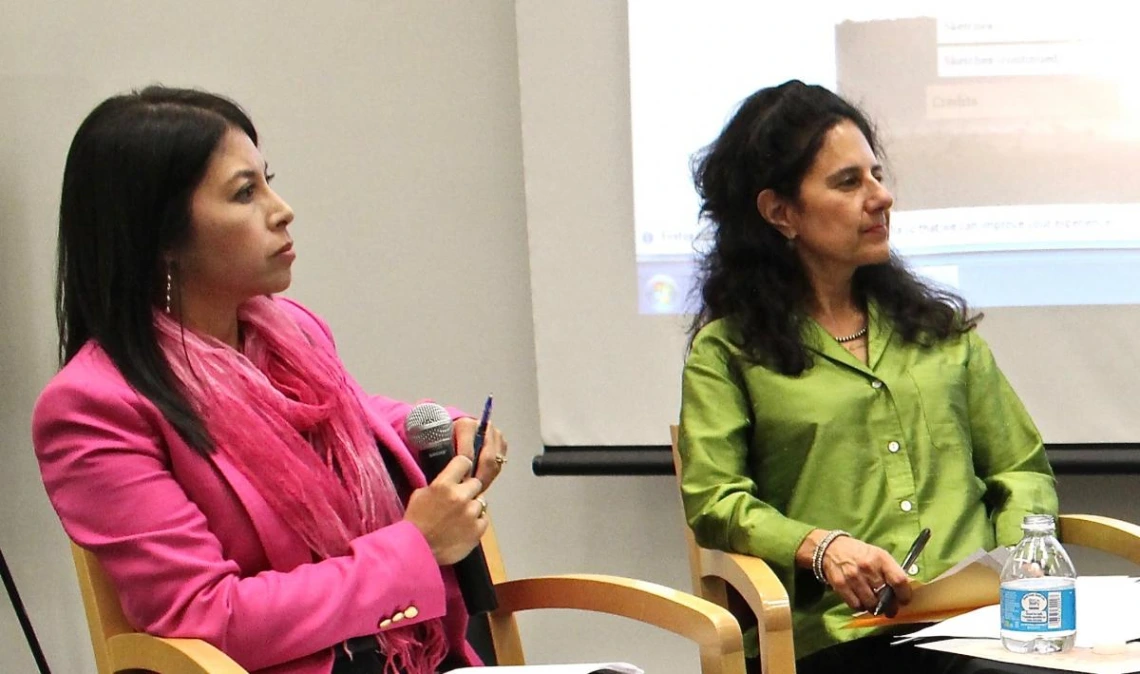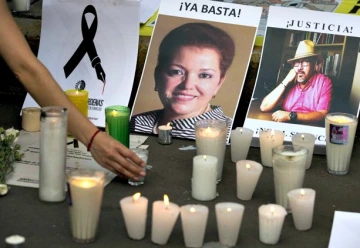Relly, Bustamante analyze violence against journalists

Celeste González de Bustamante and Jeannine Relly
The number of journalists assaulted, threatened and killed around the world is growing with more than 825 journalists slain in the last decade.
In Brazil, where 22 journalists were killed in just four years, an investigative journalist’s body was discovered beheaded. In Ukraine, one journalist was slain last year by a car bomb. In Syria, more than 100 journalists were killed in less than five years. And in less than 2½ months this year, six journalists have been slain in Mexico.
A study by University of Arizona School of Journalism professors Jeannine Relly and Celeste González de Bustamante in the June 2017 issue of Journalism & Communication Monographs offers a theoretical framework to study collective action and global and domestic responses to the increasing violence against journalists. and potential paths to research institutional and social change.
The monograph, titled “Global and Domestic Networks Advancing Prospects for Institutional and Social Change: The Collective Action Response to Violence Against Journalists,” focuses on Mexico, listed among the “five worst countries” for journalist and media worker casualties this year by the London-based International News Safety Institute.

A memorial for journalists killed in the line of duty.
In Mexico, more than 125 journalists have been killed or disappeared since the nation broke away from one-party rule at the turn of the millennium. It is a country where about nine out of 10 journalist killings are not prosecuted. Reporting on the drug war from Sinaloa may have led to the May 15 murder of Javier Valdez, the sixth journalist slain in Mexico since early March.
“The framework that the study used to analyze network interactions among global and domestic organizations, governmental and intergovernmental organizations, such as the U.N. and the European Union, offers other scholars ways to examine contexts of effective and ineffective governance related to violence perpetrated against journalists,” said Relly, who received a research fellowship for the project work from the Udall Center for Studies in Public Policy.
The research analyzed organizational engagement and mobilization, international human rights and other normative appeals, lobbying, “shaming,” dissemination of information, pressure from bilateral and multilateral networks, institutional change, and other outcomes.
According to the monograph, the study found that “organizations, globally and in Mexico, have worked together to address the public policy issue of press safety, and to strengthen and support the press as an institution in environments of violence. These organizations are pressuring governments for institutional and social change to protect journalists against ‘dark networks’ of organized crime and corrupt government officials.”
The monograph concludes that “future study will be needed to determine whether norms adopted on paper lead to concrete improvements in freedom of expression and journalists’ safety – so far, it appears they have not.”
“Despite all of the efforts nationally and internationally, journalists in many parts of Mexico continue to be killed – an average of one journalist a month in 2016,” said González de Bustamante. “Our study, hopefully, can help policymakers understand how national and international organizations work together and how they might be able to strengthen their collective actions in the future.”
The June issue of J&CM also includes commentaries from scholars with expertise and research in global and border issues: Kathleen Staudt, The University of Texas at El Paso; Rune Ottosen, Oslo and Akershus University College of Applied Sciences; Sallie Hughes, University of Miami; and Silvio Waisbord, The George Washington University.
Hughes notes the study "moves beyond description of what is happening around the particular case of press rights and journalist safety in Mexico and creates a model for testing – or modifying – in comparative contexts, including similarly insecure democracies, democracies where press safeguards are more secure and consistent, and between historical periods or spheres of action within the same country.”
Waisbord notes the researchers "lay out a challenge for scholars interested in the study of press safety and press freedom in violent settings: to document the workings and the achievements of transnational activism while recognizing its limitations to contribute a culture of peace and the rule of law."

